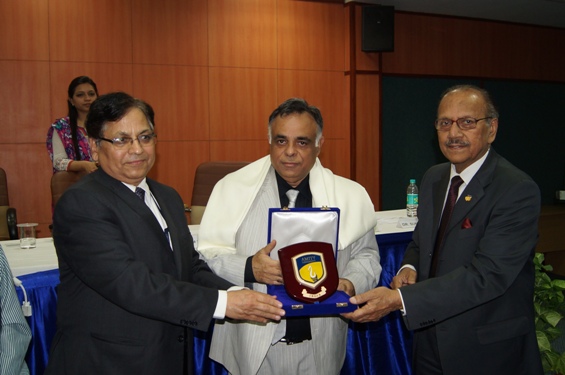13 Mar 2014|Noida | Amity University Campus, Sector- 125 Noida
Amity Institute of Biotechnology organizes Symposium on Application of Stem Cells

Amity Institute of Biotechnology organized one day Symposium on Application of Stem Cells at Amity University Campus, Sector-125 Noida. Dr. Anupam Sachdeva, Director – Pediatric Hematology, Sir Ganga Ram Hospital, Dr. Rajneesh Verma - Monash University, Australia, Dr. Sunil Saran – Amity Science Technology & Innovation Foundation, Dr. K.C Upadhyaya, Professor & Advisor – Amity Institute of Biotechnology and Prof. P.K. Paul, Dy Director - Amity Institute of Biotechnology inaugurated the Symposium.
Dr. Ashok K. Chauhan, Founder President - Amity Group and H.E. Dr. Saud bin Mohammed Al-Sati, Ambassador of Saudi Arabia were also present during the occasion.
Dr. K.C Upadhyaya, Professor & Advisor – Amity Institute of Biotechnology while welcoming the scientists and experts said that biotechnology is a multi disciplinary science in which stem cell is an important topic. He added that most of the diseases are related to the malfunctioning of cells.
Dr. Anupam Sachdeva, Director – Pediatric Hematology presented his talk on the topic “Stem Cells in Human Health: Myth or Reality”. Dr. Sachdeva said that stem cells are cells in the body that can further multiply. He added that one has to take permission of ICMR – Stem Cells Ethical Committee for research related activities. He stated that stem cells are present in umbilical cord and placental blood which can be collected after a baby is born. Dr. Sachdeva said that stem cells are used for curing diseases like Parkinson disease, multiple sclerosis, spinal cord injury, Duchene muscular dystrophy etc.
Dr. Rajneesh Verma - Monash University, Australia delivered his lecture on Stem Cells : New hope to save endangered animals. He said that illegal poaching is the main cause for extinction of many species. Most of the 37 species of wild cats were lost due to poaching. Dr. Verma added that to maintain bio diversity there are two approaches for proper conservation:
1. In Site Conservation - An adaptive environment is created and maintained for the conservation of species.
2. Ex Site Conservation – Cryopreservation of animal genetics. In this somatic cell nucleon transfer or cloning is performed.
Students, faculty members, researchers of Amity University were present during the symposium